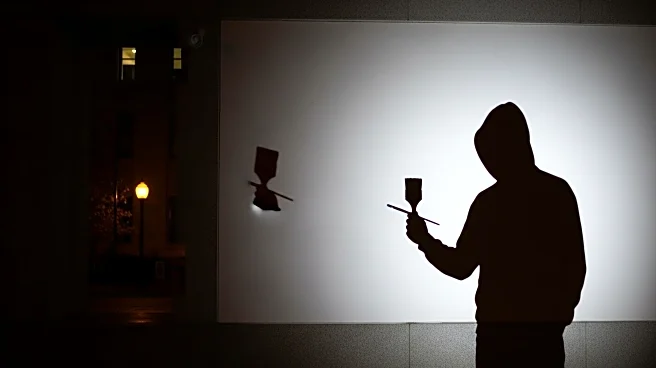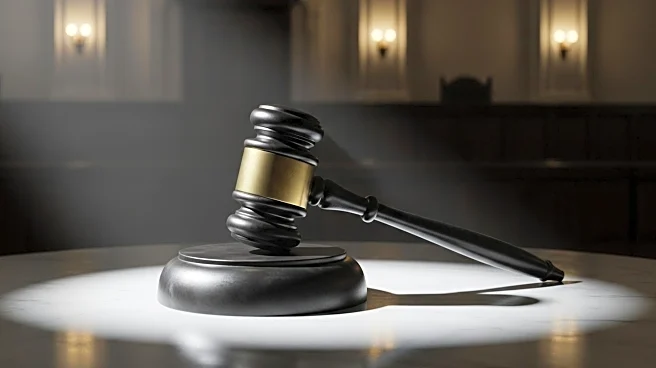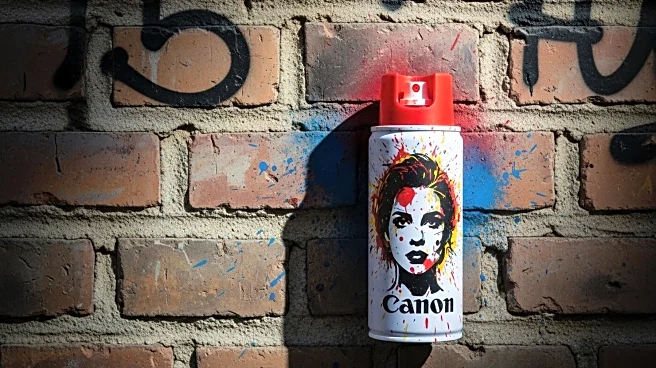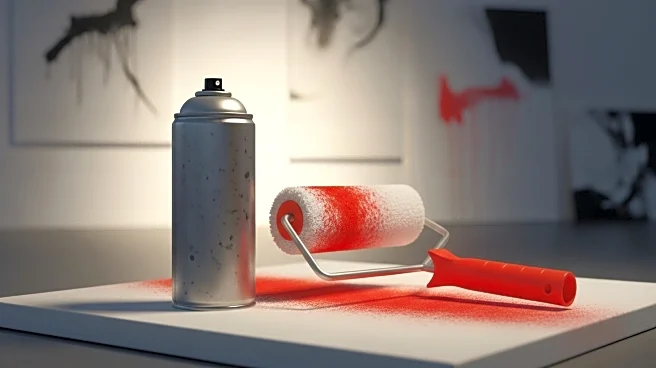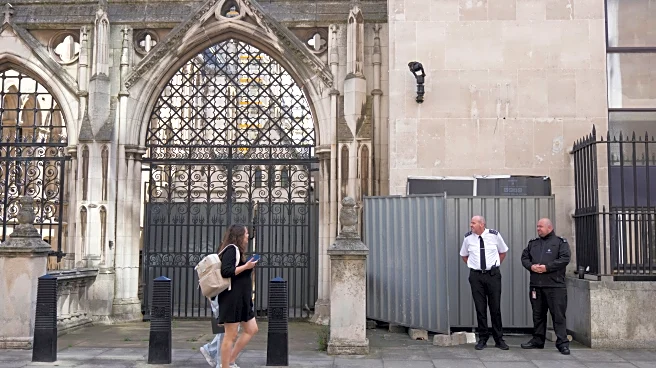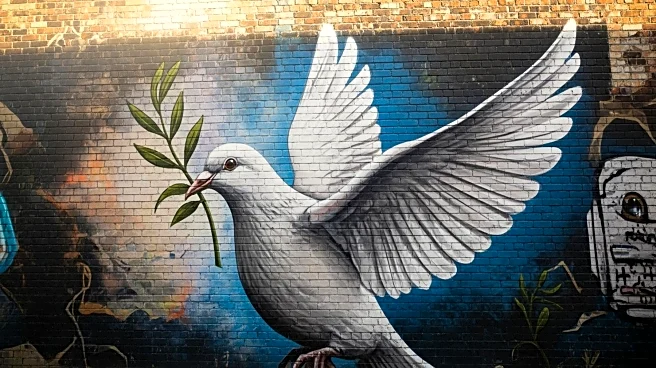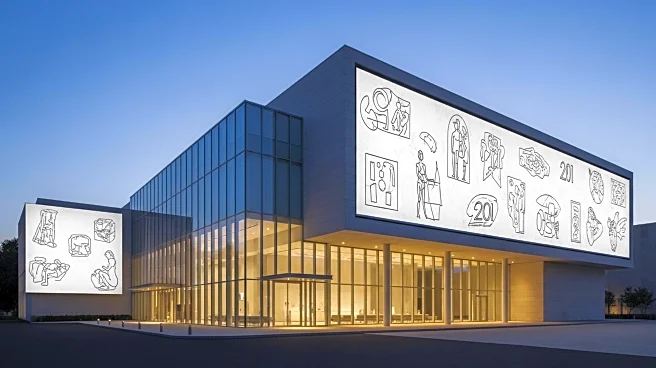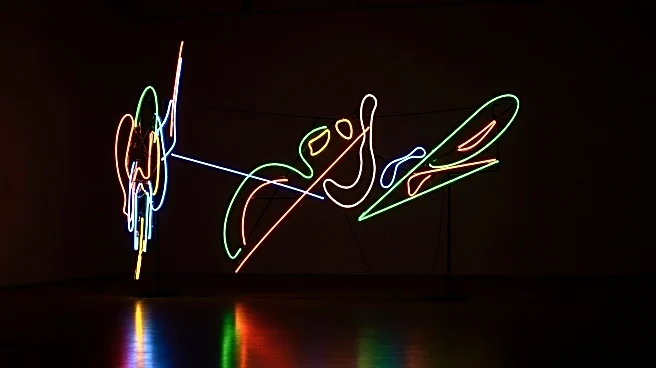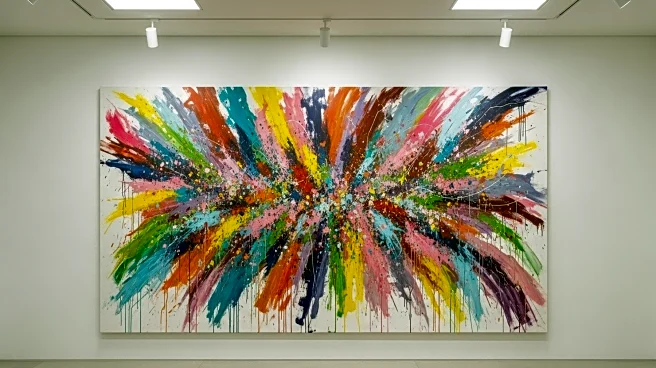What's Happening?
A mural by the renowned street artist Banksy, depicting a judge beating a protestor with a gavel, was removed from the Royal Courts of Justice in London. The artwork, painted on September 8, featured a protestor using a placard for protection, with a red spatter mark resembling blood. The mural was quickly covered and guarded by security after Banksy shared images on Instagram. On September 10, the mural was scrubbed off by a masked individual, with police officers present. The Ministry of Justice stated the removal was due to the building's protected status under British heritage laws, requiring maintenance of its original character. The mural was seen as a reference to recent arrests at a pro-Palestine protest in London, where nearly 900 people were detained.
Why It's Important?
The removal of Banksy's mural highlights tensions between artistic expression and legal regulations concerning heritage sites. The artwork's reference to recent protests underscores ongoing debates about freedom of expression and the right to protest. The incident has sparked discussions about the role of art in political commentary and the limits imposed by legal frameworks. The Good Law Project, which filmed the mural's removal, criticized the act as symbolic of erasing protest rights, reflecting broader societal concerns about civil liberties.
What's Next?
The removal of the mural may lead to further scrutiny of how heritage laws are applied to contemporary art, especially works with political messages. Advocacy groups like the Good Law Project may continue to challenge restrictions on protest rights, potentially influencing public policy and legal interpretations. The incident could also inspire other artists to create works addressing similar themes, contributing to ongoing dialogues about art and activism.
Beyond the Headlines
The event raises questions about the balance between preserving historical sites and accommodating modern artistic expressions. It also highlights the power of art to provoke discussions on social justice and civil rights. The mural's removal may prompt legal and cultural institutions to reconsider how they engage with politically charged artworks, potentially leading to shifts in policy and public perception.


